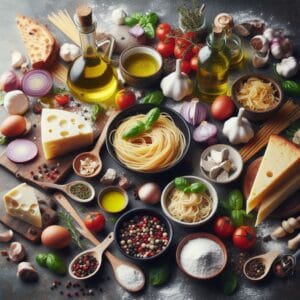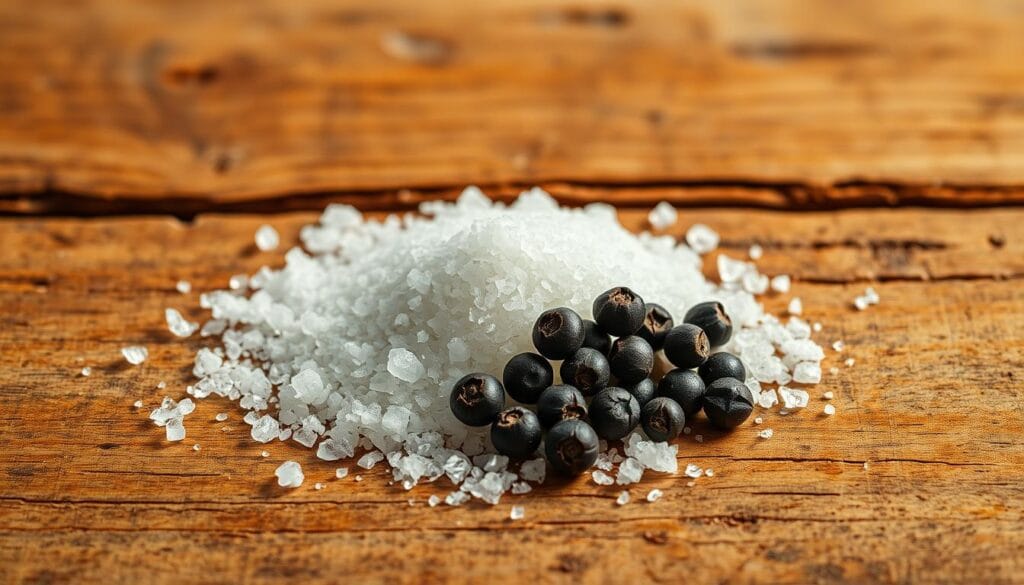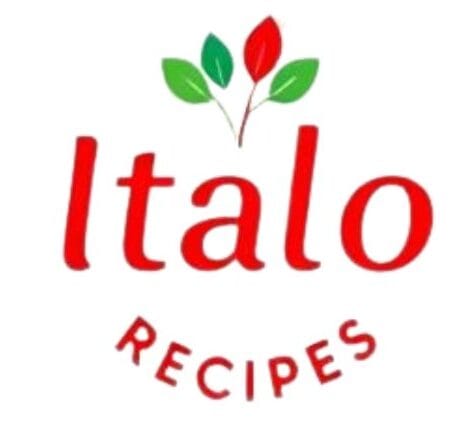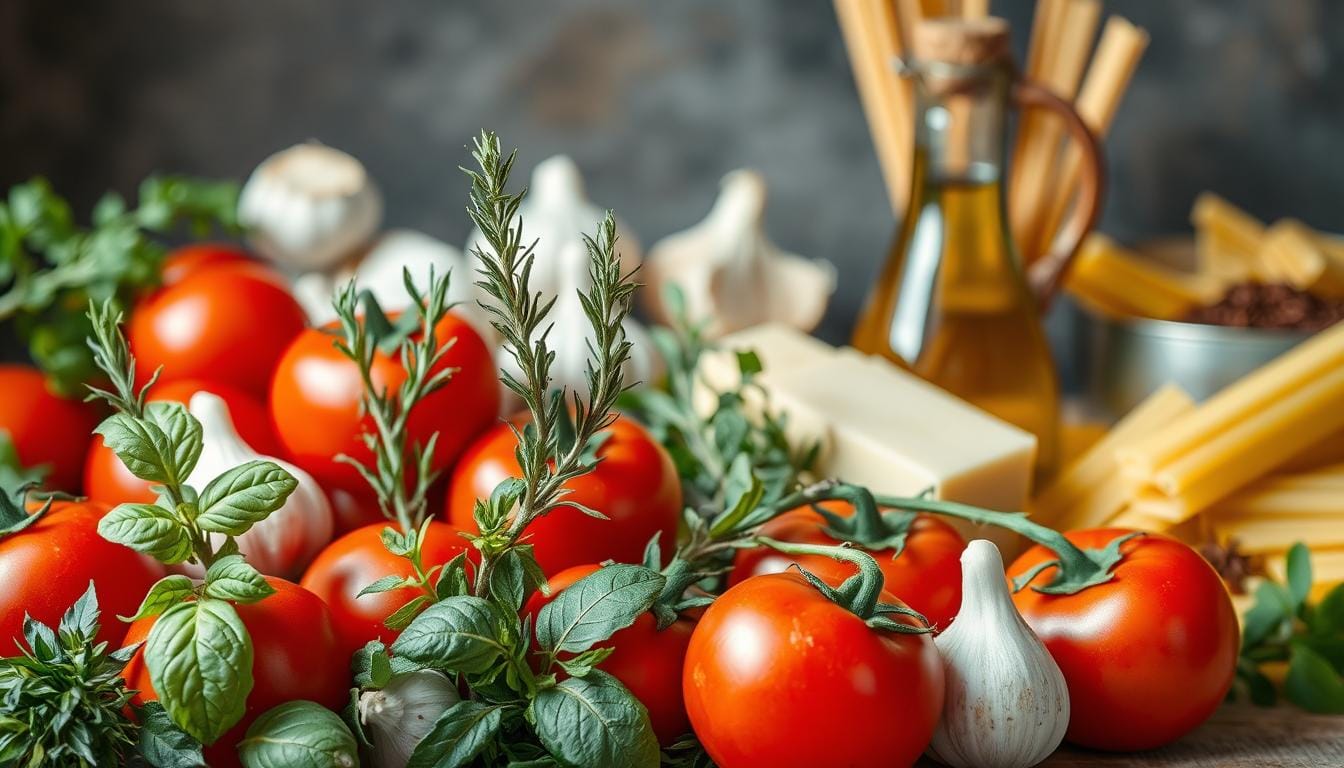The 10 Basic Ingredients to Succeed in Your Italian Dishes at Home
Italian cooking is more than just following a recipe. It’s about bringing people together with flavors and love. When you cook Italian food at home, you’re sharing a piece of culture and tradition.
Cooking Italian dishes can be simple when you have the right ingredients. The secret to a great Italian meal lies in the freshness and quality of what you put into it. By focusing on basic ingredients, you can elevate your cooking and make your dishes stand out.
Using the right ingredients can make all the difference in your Italian cooking. It’s not just about the pasta or the sauce; it’s about the overall quality of your dish. By selecting the best ingredients, you can ensure that your meals are not only delicious but also authentic.
Table of Contents
Key Takeaways
- Freshness matters in Italian cooking.
- Quality ingredients elevate your dishes.
- Basic ingredients are the foundation of Italian cuisine.
- Authenticity is key to a great Italian meal.
- Simple ingredients can lead to complex flavors.
Understanding the Importance of Quality Ingredients
To make delicious Italian dishes, it’s key to know the value of quality ingredients. Fresh ingredients are the heart of Italian cooking. They add real flavors, enticing smells, and great textures to our meals.
When selecting ingredients, think about their quality. It affects how your food tastes and looks. Good ingredients make your dishes taste better and look nicer.
The ingredient quality criteria include being fresh, in season, and without additives. For example, using fresh, seasonal veggies can turn a simple pasta dish into something amazing. Choosing extra virgin olive oil instead of regular can also change the taste of your dishes a lot.
| Ingredient | Low Quality | High Quality |
|---|---|---|
| Olive Oil | Refined olive oil with additives | Extra virgin olive oil, cold-pressed |
| Tomatoes | Canned tomatoes with added salt | Fresh, seasonal tomatoes or San Marzano canned tomatoes |
| Pasta | Mass-produced, dried pasta | Artisanal, durum wheat semolina pasta |
By following Italian cuisine principles and choosing high-quality ingredients, your dishes will be both tasty and true to Italian tradition. Whether it’s a simple salad or a complex risotto, the quality of your ingredients will show in the final dish.
In short, the secret to great Italian cooking is knowing the importance of quality ingredients. By making smart choices when picking them, you’ll create dishes that truly capture the essence of Italian cuisine.
Essential Italian Staples for Your Kitchen
To cook Italian food like a pro, you need the right staples in your kitchen. Italian food is simple but relies on quality ingredients. A few key staples can help you make many authentic Italian dishes.
Pasta: Choosing the Right Type
Pasta is key in Italian cooking, with many shapes and sizes. The pasta type affects the dish. For example, spaghetti and linguine are good for light sauces. Penne and rigatoni are better for chunky sauces. Choose pasta that matches your sauce for the best taste.
Olive Oil: Extra Virgin vs. Regular
Olive oil is crucial in Italian cooking. Extra virgin olive oil (EVOO) is made without heat, giving it a richer taste. It’s perfect for dressings and finishing dishes. Regular olive oil is better for cooking at high heat because it has a milder taste.
When buying olive oil, choose reputable brands. Look for certifications like « cold-pressed » or « first cold-pressed » for quality.
Canned Tomatoes: Finding the Best Quality
Canned tomatoes are a must in Italian kitchens. They add flavor and color to dishes. For the best taste, pick San Marzano or pomodoro tomatoes. Avoid cans with added salt or preservatives.
Think about your dish when using canned tomatoes. Crushed tomatoes are good for sauces, while diced tomatoes add texture to stews and casseroles.
Fresh Produce: What to Look For
To truly capture the essence of Italian cooking, you need to focus on selecting the right fresh produce. Fresh herbs and seasonal vegetables are vital. They add flavor, texture, and authenticity to your dishes.
Herbs: Fresh vs. Dried
Herbs are key in Italian cuisine. Choosing between fresh and dried herbs can greatly impact your cooking. Fresh herbs like basil, parsley, and rosemary offer a vibrant flavor and aroma. Dried herbs, on the other hand, are more convenient and last longer.
When using fresh herbs, pick bunches with bright colors and no wilting. Store them in the fridge to keep them fresh. For dried herbs, choose high-quality ones stored in airtight containers to preserve flavor.
Seasonal Vegetables: Choosing the Best Options
Seasonal vegetables are central to Italian cooking. They offer the best flavors and textures when in season. Summer is great for tomatoes, zucchini, and eggplants. Winter is best for root vegetables like carrots and beets.
When shopping for seasonal vegetables, look for firm, colorful, and blemish-free produce. Visit local farmers’ markets or join a CSA program. This way, you get the freshest produce directly from the source.
Proteins: Selecting the Right Meat and Seafood

Chicken and Pork: Best Cuts for Italian Cooking
Chicken and pork are common in Italian dishes, from Pollo alla Cacciatora to Porchetta. Free-range or organic chicken can boost flavor and texture. For pork, the shoulder or loin works best in traditional Italian recipes.
For chicken, boneless, skinless breasts or thighs are good choices, depending on the recipe. Pork shoulder is great for slow-cooked meals, while loin is better for roasting.
Fish: What Works Well in Italian Dishes
Fish is also a favorite in Italian cooking, especially near the coast. Choose fish with firm flesh for various cooking methods. Sea bass, snapper, and branzino are excellent choices.
Freshness is crucial when picking fish. Look for clear eyes, shiny scales, and a fresh smell. For seafood like shrimp and scallops, make sure they’re sustainably sourced and stored well.
Cheese: The Heart of Italian Flavors
Cheese is key in Italian cooking, adding depth and complexity to many dishes. Italian cuisine uses cheese in many ways, with each region having its own favorites.
Parmigiano-Reggiano and Mozzarella are two cheeses that are used a lot. They are versatile and loved by many.
Parmigiano-Reggiano: Why It’s Essential
Parmigiano-Reggiano is called the « King of Cheeses. » It has a granular texture and a sharp, salty taste. It’s great over pasta, salads, and soups, adding a rich flavor.
The aging process of Parmigiano-Reggiano is at least 24 months. This makes it taste and feel unique.
Mozzarella: Fresh vs. Processed
Mozzarella is crucial in Italian cooking, especially for pizzas and lasagnas. Fresh and processed Mozzarella differ in taste, texture, and use.
| Characteristics | Fresh Mozzarella | Processed Mozzarella |
|---|---|---|
| Taste | Mild, creamy | More processed, less creamy |
| Texture | Soft, moist | Drier, melts differently |
| Usage | Ideal for caprese salads, fresh pizzas | Better for cooking, melting |
Choosing between fresh and processed Mozzarella depends on your dish’s needs. For real Italian taste, fresh Mozzarella is best.
Spices and Seasonings: Enhancing Your Dishes

Spices and seasonings are key in Italian cooking. They boost flavors and aromas. The right mix can turn a simple dish into a masterpiece.
In Italian cooking, salt and pepper are crucial. Their quality greatly affects your dish’s taste.
Salt: Quality Matters
Not all salt is the same. High-quality salt, like sea salt or kosher salt, adds depth to your dishes. They have a coarser texture and richer flavor than regular salt.
The type of salt you use can change a dish’s texture. For example, flaky sea salt adds crunch, while finer salt dissolves well in sauces.
Pepper: Different Types for Various Dishes
Pepper is vital in Italian cooking, with different types offering unique flavors. Black pepper adds a sharp taste. White pepper is milder and used in light-colored sauces.
For more complex tastes, try pink peppercorns or green peppercorns. They bring sweet and fresh notes to dishes. Experimenting with different peppers can enhance your Italian recipes.
Breads: Essential Varieties for Italian Meals
The art of Italian cooking relies heavily on the quality and variety of bread. Italian meals often feature different breads, each with its own purpose. These breads serve as a base for appetizers and accompany main courses, making bread a key part of Italian cuisine.
Focaccia: A Must-Have for Every Cook
Focaccia is a versatile Italian flatbread known for its soft texture and rich flavor. It’s often seasoned with olive oil, herbs, and sometimes cheese. This bread is perfect for dipping in olive oil or sauces, making it a staple in Italian cooking.
Key Features of Focaccia:
- Soft and dimpled texture
- Rich flavor profile
- Versatile for various toppings and dips
Ciabatta: Best Uses and Pairings
Ciabatta is a popular Italian bread known for its airy holes and slightly crispy crust. It’s ideal for sandwiches and toast, and pairs well with soups and salads. The light texture of ciabatta makes it a favorite for many Italian dishes.
Best Uses for Ciabatta:
- Making sandwiches
- Serving alongside soups
- Creating croutons for salads
Here’s a comparison of focaccia and ciabatta in terms of their characteristics and uses:
| Bread Type | Texture | Best Use |
|---|---|---|
| Focaccia | Soft, dimpled | Dipping, appetizers |
| Ciabatta | Airy, slightly crispy | Sandwiches, soups, salads |
In conclusion, both focaccia and ciabatta are essential bread varieties in Italian cuisine. Each has unique characteristics and uses. By incorporating these breads into your meals, you can enhance the authenticity and flavor of your Italian cooking.
Baking and Cooking Essentials
Choosing the right ingredients is key for great Italian baking. Flour and yeast are especially important. They affect the quality and texture of your baked goods.
Flour: The Best Types for Italian Cuisine
Flour is a must in Italian baking. The right type is crucial. For pasta and pizza dough, « 00 » flour, or Caputo flour, is best. It has a fine texture and low protein.
For cakes and pastries, all-purpose flour is the go-to choice.
| Type of Flour | Protein Content | Best Use |
|---|---|---|
| « 00 » Flour | Low (around 9-12%) | Pasta, Pizza Dough |
| All-Purpose Flour | Medium (around 10-12%) | Cakes, Pastries |
| Bread Flour | High (around 12-14%) | Bread, Focaccia |
Yeast: Choosing Between Fresh and Dried
Yeast is vital for bread and pizza dough in Italian baking. You can pick between fresh yeast and dried yeast. Fresh yeast adds a richer flavor but lasts shorter. Dried yeast is easier to store and lasts longer.
Consider your baking habits and storage space when choosing. Dried yeast is better for those who bake less often.
In short, the flour and yeast you pick greatly influence your Italian baked goods. Knowing the differences can help you bake better.
Wine: Pairing with Your Italian Menu
In Italian cuisine, pairing wine with food is key. It brings out the best in your dishes. Whether it’s a hearty pasta sauce or a delicate seafood risotto, the right wine can make your meal unforgettable.
Red vs. White: What to Know
Choosing between red and white wine is the first step in pairing wine with Italian food. Red wines like Chianti or Barolo pair well with rich dishes like lasagna or braised meats. On the other hand, white wines such as Pinot Grigio or Vermentino are better for lighter dishes, including seafood and salads.
Cooking Wine: Is It Necessary?
Cooking wine is often used in Italian recipes to add depth and complexity. It’s not always needed, but it can greatly enhance your dishes’ flavors. If you’re cooking with wine, pick a dry white or red that complements your recipe’s ingredients.
Popular choices for cooking wine include dry Riesling or Pinot Noir. Always choose a wine you’d enjoy drinking on its own. This ensures the best flavor in your cooking.
Putting It All Together: Recipes to Try
Now that we’ve looked at the key ingredients, it’s time to use them in tasty Italian recipes. Italian food is famous for its deep flavors and big dishes. With the right ingredients, you can make these classics at home.
Classic Pasta Dishes
Pasta is a big part of Italian food, and there are many ways to make it. Here are a few classic pasta dishes to try:
- Spaghetti Carbonara: A rich and creamy dish made with spaghetti, bacon or pancetta, eggs, and Parmigiano-Reggiano.
- Fettuccine Alfredo: A decadent dish featuring fettuccine tossed in a creamy sauce made from butter, Parmigiano-Reggiano, and sometimes cream.
- Penne alla Vodka: A spicy and savory dish combining penne pasta, vodka, tomatoes, and garlic.
Simple Risottos for Beginners
Risotto is a comforting Italian dish that might seem hard for beginners. But with the right techniques and ingredients, it’s easy. Here are some tips for making simple risottos:
- Choose the Right Rice: Arborio rice is the most commonly used variety for risotto due to its high starch content, which creates a creamy texture.
- Use a Flavorful Broth: Whether you prefer chicken, beef, or vegetable broth, make sure it’s warm and added gradually to the rice.
- Don’t Rush: Risotto is a dish that requires patience. Stir constantly and add liquid gradually to achieve the perfect creaminess.
By following these guidelines and using the ingredient picking guide provided earlier, you can create delicious and authentic Italian risottos and pasta dishes.
Your Journey to Authentic Italian Cooking
Exploring Italian cooking means focusing on the best ingredients. With the right ones and practice, you can make dishes that taste like Italy. This will bring Italy’s flavors right into your home.
Making Progress with Practice
Mastering Italian cooking takes practice. Trying new recipes and techniques helps you get better. Even if your first tries don’t work out, keep going. You’ll get better and feel more confident in the kitchen.
Exploring Local Ingredients
Italian cooking loves local and seasonal ingredients. Using fresh produce from your area adds special flavors to your dishes. It makes your Italian meals more authentic. Try different local ingredients to find the best for your recipes.
With practice, patience, and trying new local ingredients, you’ll make amazing Italian dishes. These will impress your family and friends.

